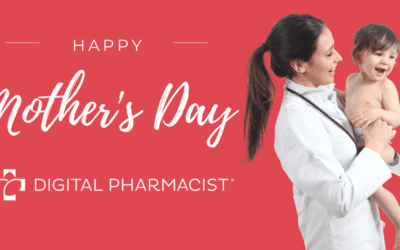Having a solid understanding of your independent pharmacy’s financials can spell the difference between your business’s success and failure. While you may have an accountant you trust to prepare them, getting a grasp on the basics can aid you in making better business decisions, day-in and day-out.
As we continue this three-part series, we’ll break down gross profit and operating expenses, both of which are key components of your income statement that ultimately impact your business’s bottom line. As discussed in Part 1 of the series, gross profit is directly affected by how well you manage your revenue and cost of goods sold.
Gross Profit: What it Means
Net Sales – Cost Of Goods Sold (COGS) = Gross Profit
Gross profit is the amount that remains after selling a product and deducting the costs associated with that product, such as deductions, discounts, and product costs. It stands to reason that by regularly monitoring your revenue and cost of goods sold, you can increase your gross profit.
It’s important to note that operating expenses do not impact gross profit unless they are production costs, which makes them part of your cost of goods sold. Instead, they come into the income statement equation after you’ve determined your gross profit (we’ll discuss this concept later on). Rather, gross profit gives you the state of your cash flow and tells you how much you have to cover those expenses.
What’s So Great About Cash Flow?
Cash flow is an essential component of your business. When you’re aware of your pharmacy’s gross profit, you have a more accurate idea of the resources available to operate your business.
Gross profit allows you to manage expenses and allocate capital appropriately within the business. It’s also a good indicator of the health of your business and how effectively it’s run.
While it’s important to keep those cash flow dollars in mind, you should also review gross profit as a percentage of your revenue, known as the “gross profit margin”. Gross profit margin can be calculated like this:
Gross Profit ÷ Total Revenue = Gross Profit Margin
Example: A customer buys a bottle of fish oil capsules for $15. Your cost of goods sold is $10 per bottle. Therefore the $15 sale minus the $10 COGS equals $5 gross profit. Dividing the $15 revenue (sale) by the $5 gross profit leaves you with a 33% gross profit margin.
If you sold that same bottle of fish oil for $12 revenue minus $10 cost of goods sold, you’d have $2 in gross profit and a 16.5% gross profit margin The higher your gross profit, the more funds you have available to grow your business.
Ways to Increase Your Gross Profit
There’s a variety of ways to increase your gross profit, including managing inventory and increasing sales. After all, there are more items for customers to buy in your independent pharmacy than just prescriptions.
Here are some strategies to consider:
- Monitor prescription cash pricing and third-party reimbursements to ensure the pharmacy is reimbursed the proper amounts.
- Properly manage all of your inventory, especially your prescription drugs, through inventory controls such as perpetual inventory management, just-in-time inventory, and/or electronic interfaces.
- Ensure you maximize your purchasing plan(s) through your suppliers to attain the best cost of your inventory.
- Consider branching out into pharmacy-specific niche markets such as compounding, home-healthcare equipment (DME), and immunizations.
- Promote non-Rx departments, such as over-the-counter (OTC) items, to increase traffic and sales.
Operating Expenses
Remember the formula:
Net Sales – Cost of Goods Sold = Gross Profit
Gross Profit – Operating Expenses = Net Profit
Since the goal of any business is to boost its bottom line (or net profit), keeping your controlled expenses in check is key.
What Are Operating Expenses?
Essentially, operating expenses are the expenditures that your pharmacy incurs while conducting its business operations. This includes rent, employee salaries and benefits, utilities, computers and other workplace equipment, marketing, office supplies, bank fees, and more.
However, inventory is not an operating expense. Inventory, or the merchandise that you purchase for resale, is a cost of goods sold (see more on cost of goods sold in part one of this series). For example, the cost of the prescriptions that you buy from a supplier (to then resell to your customers) is a cost of goods sold (COGS). Therefore, the general rule is this: if an expense is not related to COGS, it’s considered an operating expense.
Managing Operating Expenses Effectively
It is crucial to optimize and reduce expenses without impacting your customer experience.
It’s safe to say that you want to increase the cash flow of your independent pharmacy. One way to achieve this is by monitoring, and ultimately reducing, your pharmacy’s operating expenses. However, this can be a Catch-22. Lower some areas of operating expenses too much and you run the risk of affecting your business’ ability to compete in the marketplace.
To that end, you want to keep operating expenses as low as possible but not to the detriment of your business. For example, let’s say that your pharmacy is known for providing exceptional customer service. This may be what sets you apart from the big box-type pharmacies — providing your edge over the local competition.
Now assume you consider reducing the number of technicians as a means of cutting expenses. While this option may be feasible on a slower weekday, it may not be a wise strategy to employ on a busier day, such as Monday or the first of the month. This may lead to your pharmacist having to perform more functions usually handled by that technician and longer check-out times for customers who count on fast and friendly service — causing them to take their business elsewhere.
Again, strive to reduce operating expenses, but not at the risk of watering down your business. It may take some time to determine the right balance, but the investment will be worth it.
Ways to Reduce Your Pharmacy’s Expenses
Various strategies exist to lower your operating expenses, which in turn increases your net profit. Here are some options to consider:
- Prepare a budget to measure and monitor all of your operational expenses. You’ll establish a benchmark and easily identify areas of cost-cutting opportunities.
- Ensure you are staffed properly. Labor costs are usually the largest expense in the pharmacy. Understanding how much labor is necessary can save significant labor costs.
- Cut the cost of supplies where possible; they are necessary costs to the business but generally do not affect the customer.
- Go Green – energy-efficient technology reduces energy costs.
- Always monitor lease/rental agreements and other contracts to ensure they are within market ranges. Review and discuss contracts at least annually and discuss money-saving options.
- Reduce your utility bills. Small changes like turning off computers after hours, installing timers on lights, and replacing your old thermostat with a programmable one can lighten the load on your electric bill.
In the final part of our pharmacy income series, we cover the basics and best practices of net profit.
Ready to transform your business? Digital Pharmacist is committed to supporting pharmacy growth. Get in touch with us today to learn more.



